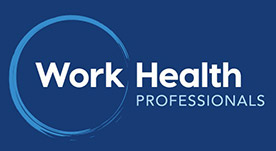WA's Noise Survey Specialists
Work Health Professionals qualified and experienced Noise Officers conduct noise surveys, also known as noise assessments, in Perth and around WA.
Measuring workplace noise levels and workers' personal noise exposures (dosimetry) are the most important part of a workplace hearing conservation and noise control program. Noise Surveys help to identify employees at risk of hearing loss through exposure to noise at work.
We also provides a full onsite audiometric testing program, including ear plug fit testing, to support organisations in their education around correct use of PPE and to help them manage the ongoing risk of noise induced hearing loss.
Noise exposure standard in WA
In WA, legislation sets a workplace noise exposure standard equivalent to 85 dB(A) averaged over eight hours, or a peak noise level of 140 dB(C).
Where these values are exceeded, all practicable measures should be taken to reduce the noise level by engineering noise control. Failing this, ways should be explored to reduce the exposure time by half for every 3 dB the level is above noise level of 140 dB (C).
Work Health Professionals conduct Noise Surveys in line with both Worksafe and Department of Mines and Petroleum requirements.
See more on the WHS Regulations (General) 2022.
Am I required to do a Noise Survey?
It is a legal requirement for an employer in a noisy workplace to organise a Noise Survey to identify the daily noise exposures of all workers, and to enable the adoption of a risk management strategy for those issues identified. An accredited WHP Noise Officer will provide this direction through a thorough Noise Survey report that addresses WorkSafe requirements.
Some indicators that your workplace noise exposure may be above the exposure standards are:
- employees have to raise their voice to communicate at a distance of 1 metre
- employees have a temporary reduction in hearing, ringing in the ears, or have to turn up the car radio after leaving work for the day; or
- employees use hearing protection during their work shifts
Noise surveys can be simple, involving only a single noise source or they can be complex involving multiple noise sources and posing a high risk to a significant number of workers. WorkSafe's Code of Practice - Managing Noise at Work - applies to all workplaces in WA where excessive noise may exist.
Noise Survey - how often?
A noise survey must be carried out when:
- you suspect work-site noise exceeds WorkSafe action levels (>85 dB)
- new plant or equipment is installed or workshop structures change
- if there are any changes in employee exposure times
- at least every 5 years.
What do I get from a noise survey?
 A noise survey is conducted in areas where noise exposure is likely to exceed "action levels" (ie: >85 dB). It is essentially the measurement of noise in an area. A work site noise survey usually provides calculations of daily noise exposures for workers. Noise surveys provide very useful information which enables you to identify:
A noise survey is conducted in areas where noise exposure is likely to exceed "action levels" (ie: >85 dB). It is essentially the measurement of noise in an area. A work site noise survey usually provides calculations of daily noise exposures for workers. Noise surveys provide very useful information which enables you to identify:
- Areas or activities where employees are likely to be exposed to harmful levels of noise (this may include noise dosimetry).
- Machines and equipment which generate harmful levels of noise.
- Employees who might be exposed to unacceptable noise levels.
- Noise control options to reduce noise exposure.
A noise survey can tell who is at risk of losing their hearing, what is causing that risk and what needs to be improved. A noise survey report will provide noise management recommendations for your workplace.
How is workplace noise measured?
For occupational hygiene purposes, the sound pressure level is measured using a sound level meter or dosimeter to determine a worker's noise exposures. Various instruments and techniques may be used. The choice depends on the workplace noise and the information needed. However, the first step is to determine if there is a noise problem in the workplace.
How do you measure an individual workers noise exposure at work?
The aim of taking a measurement with a noise dosimeter is to evaluate the average exposure of employees to noise during a normal shift.
Ideally, when taking measurements the noise dosimeter would be attached to the employee at the start of a shift and collected at the end of the shift, in order to most accurately assess the employee’s noise exposure over the whole shift. However, sampling for full shifts, and especially extended shifts, may not always be practical.
If a shorter period is sampled then care must be taken to ensure the result is representative of normal full shift exposure.
Our Noise Officers will discuss this with you, and make sure they have a good understanding of the tasks performed during the shift and the cycles of those tasks.
Associated WHS legislation for noise in the workplace
- Administered by WorkSafe WA
- Employers must demonstrate a ‘Duty of Care’ by providing all employees with a safe work environment, including suitable training and preparation for all job criteria.
- Employers must know, quantify and manage the extent of all hazards, including noise, to which their employees and contractors may be exposed.
- Update on the new WA WHS regulations on audiometric testing
Want more information or have a question on noise surveys? We're experts
